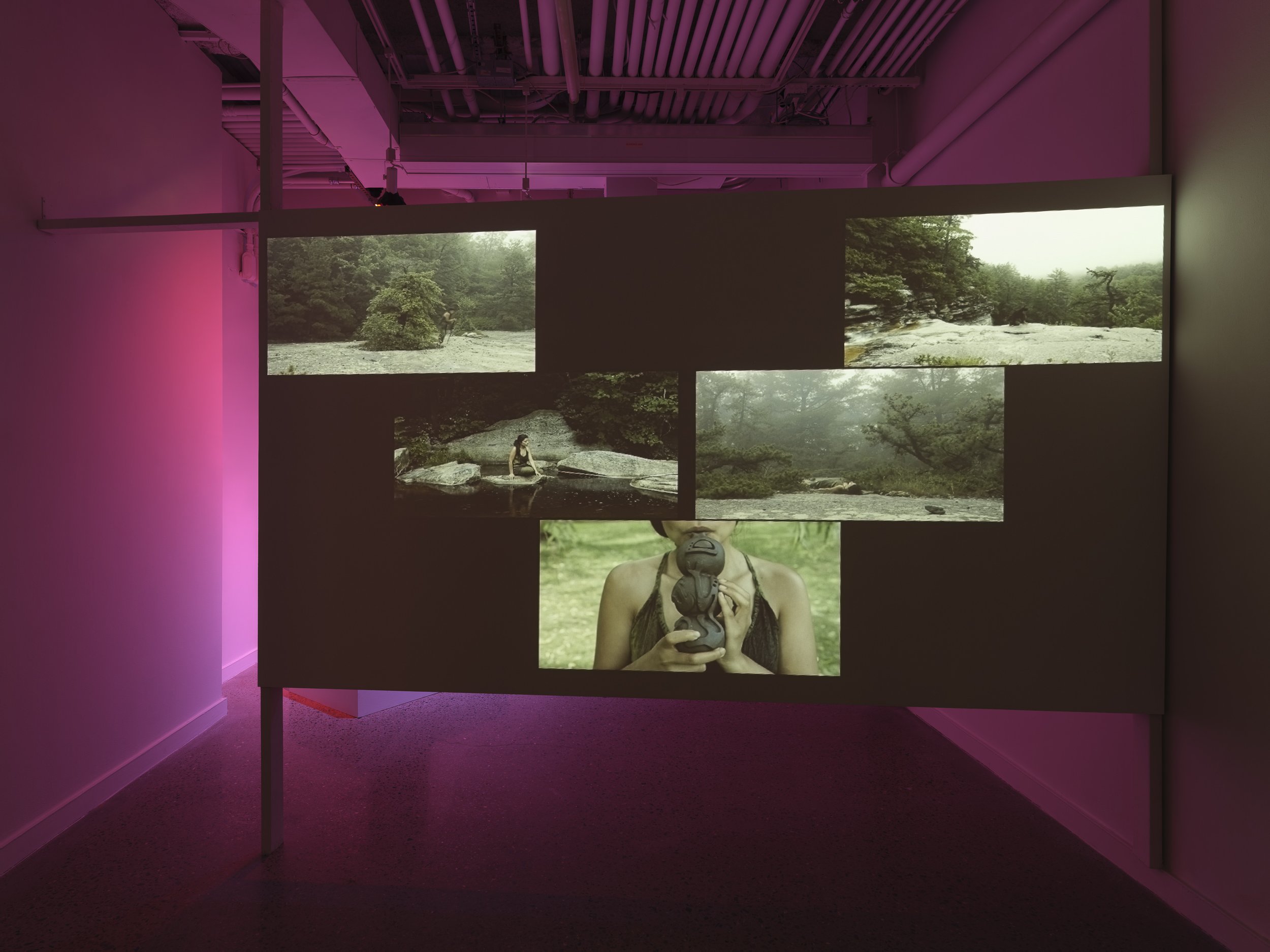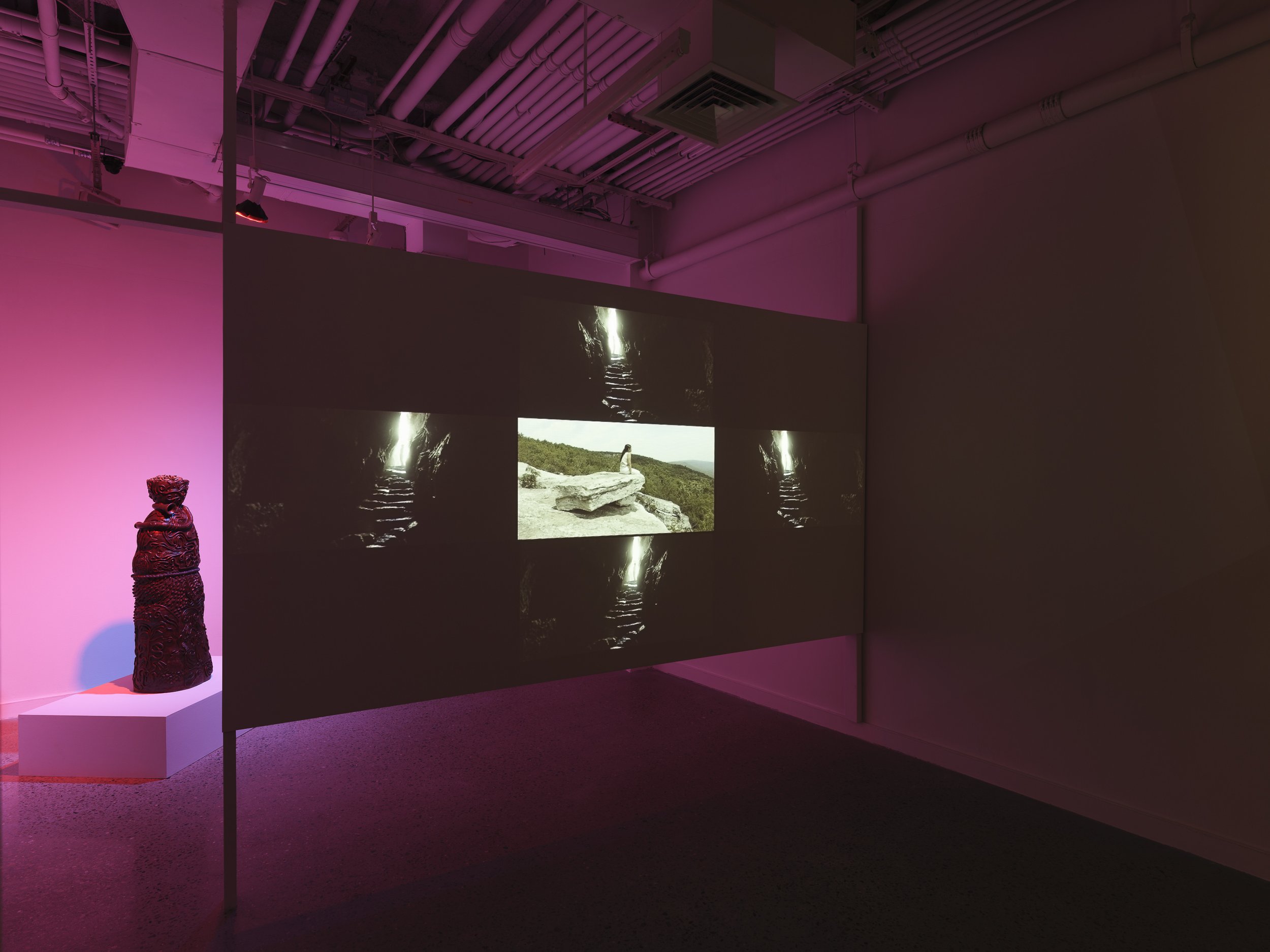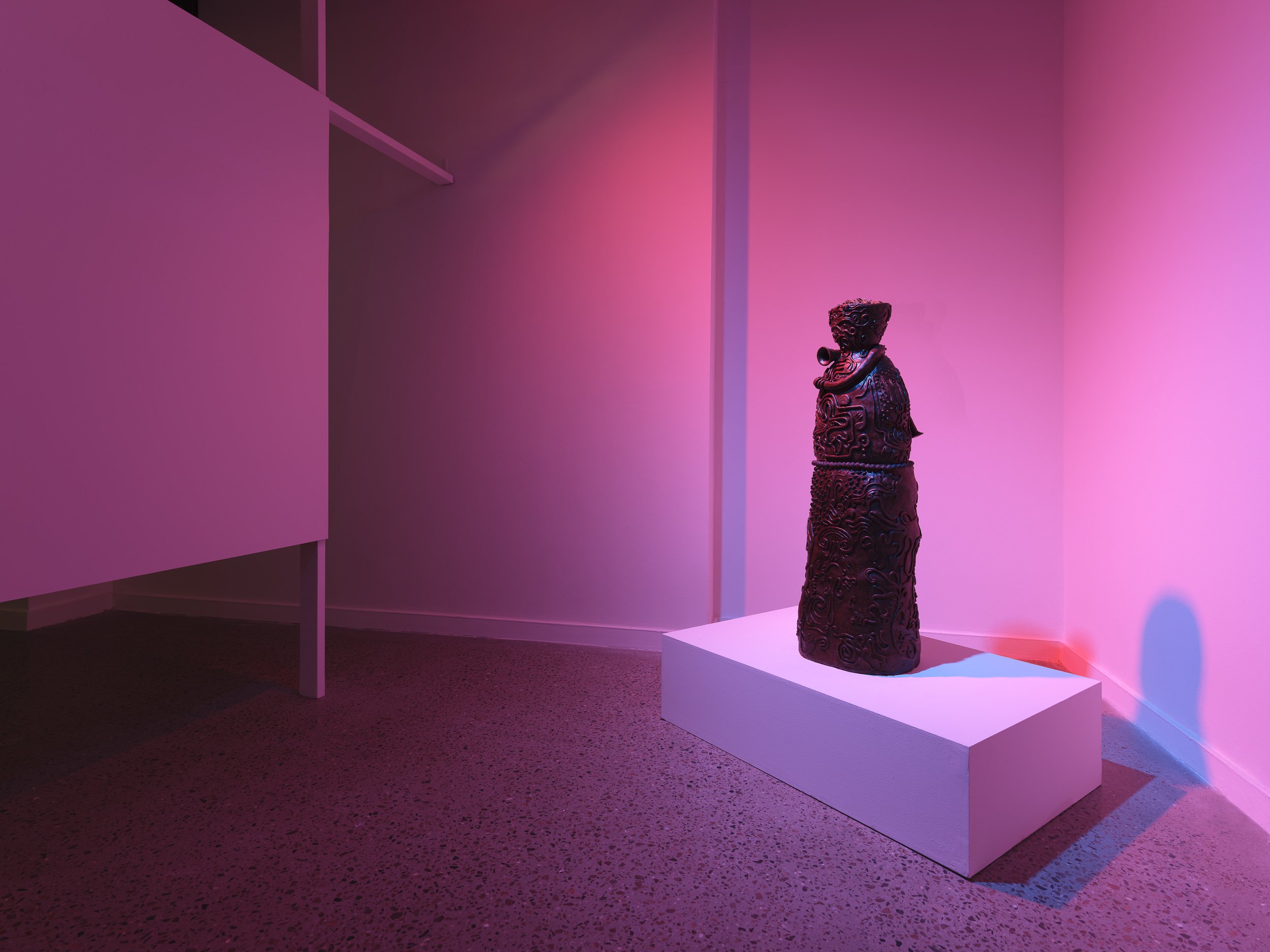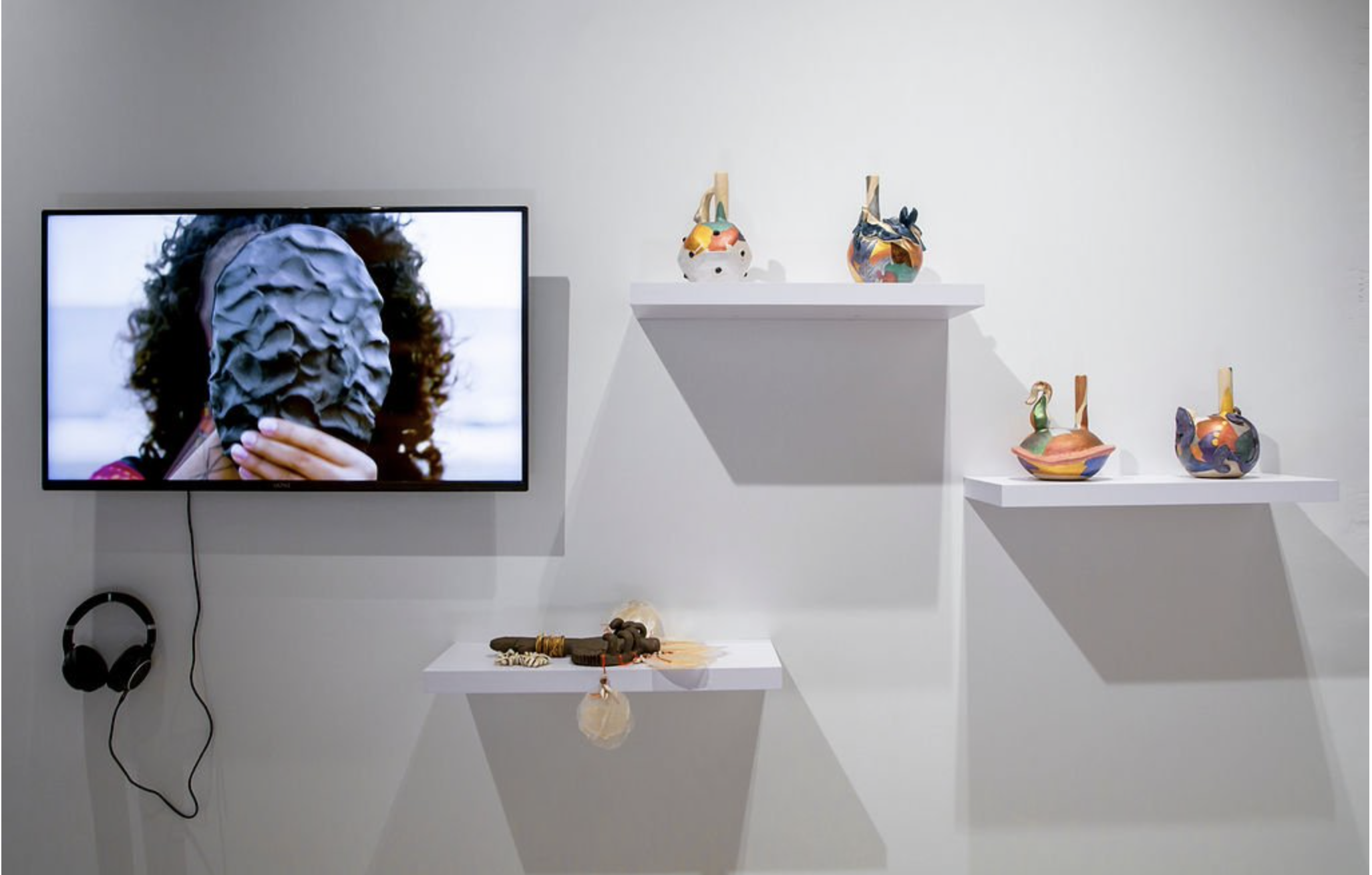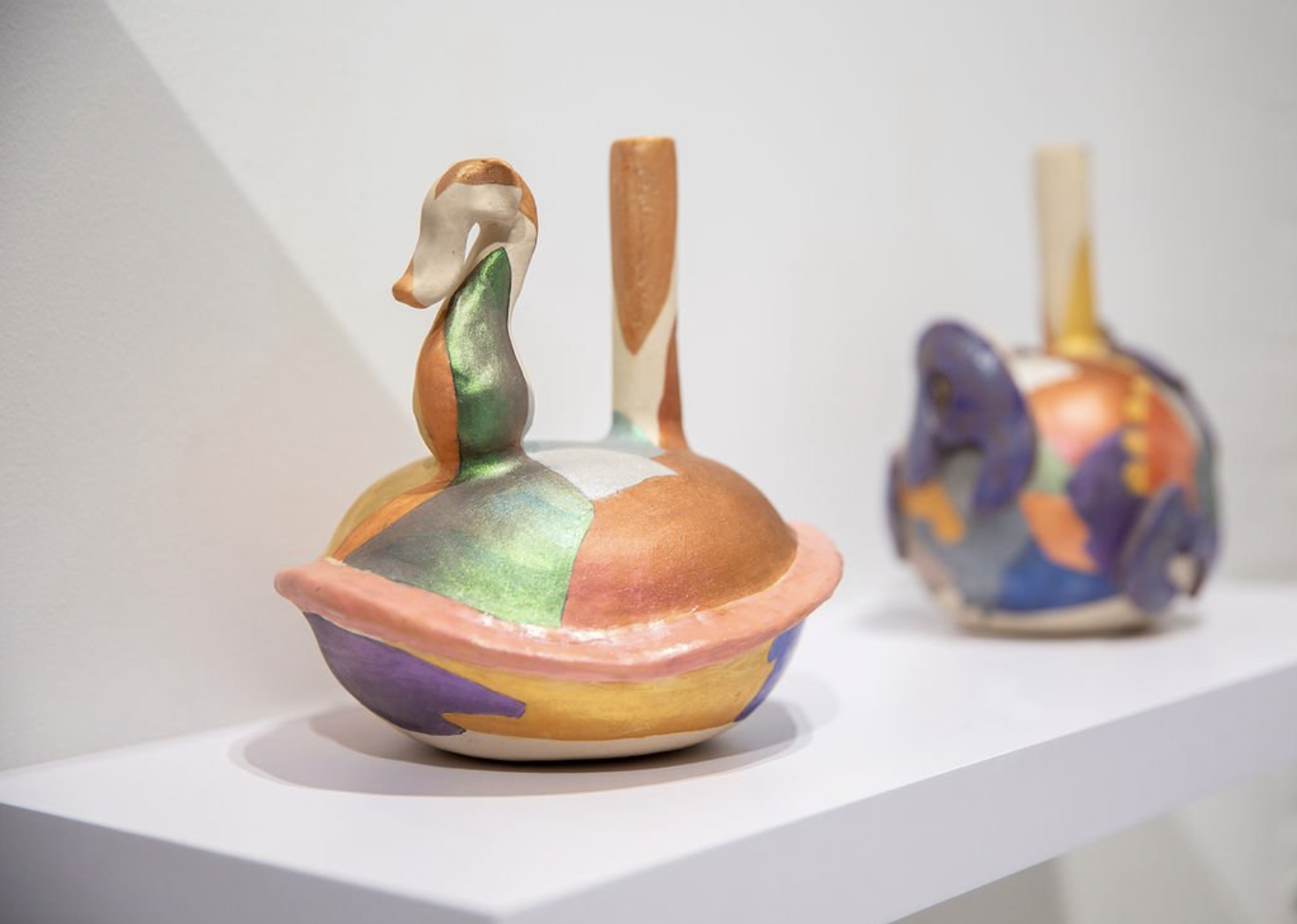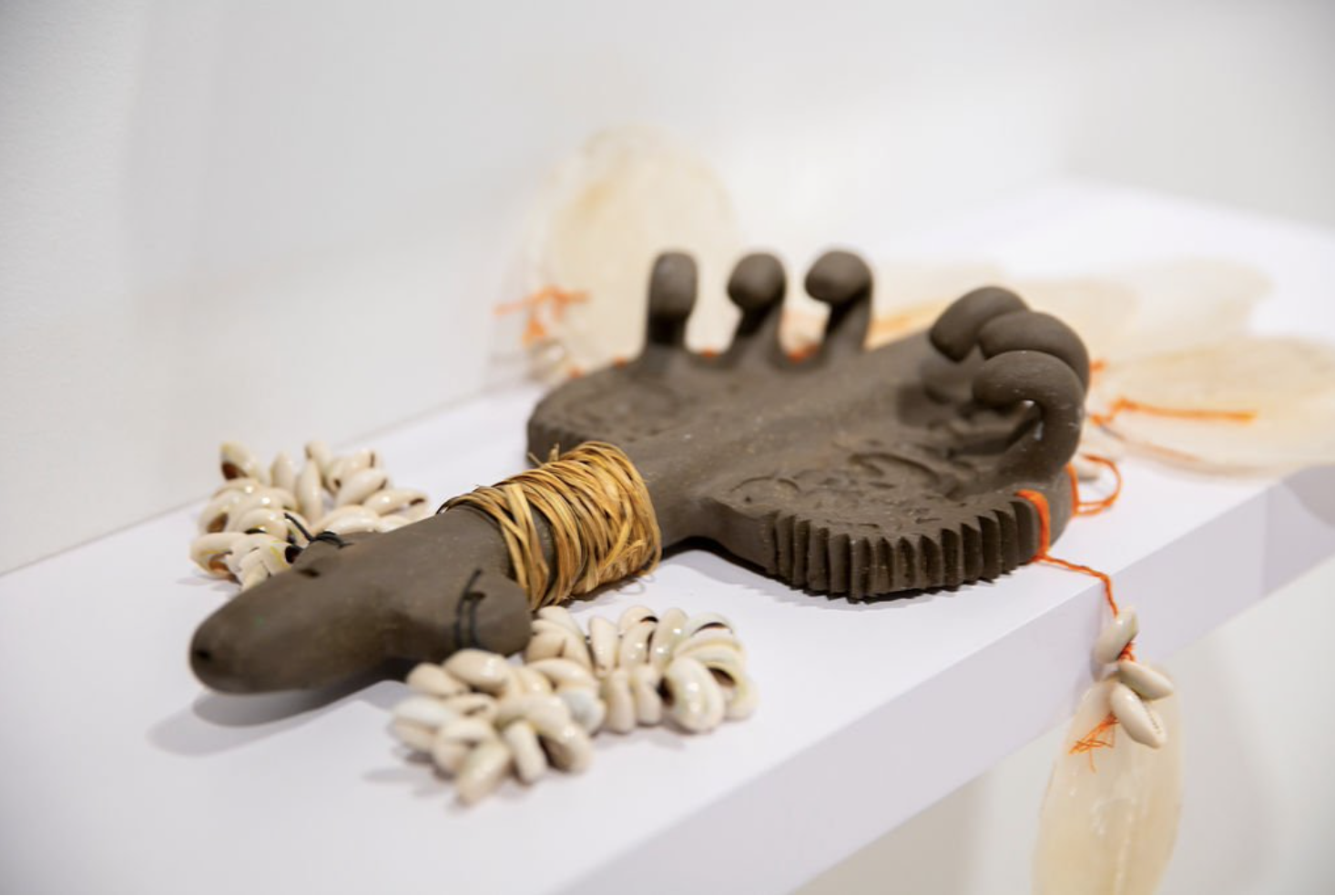Q&A: Koyoltzintli Miranda-Rivadeneira
By Rafael Soldi | February 10, 2022
Koyoltzintli Miranda-Rivadeneira, is an interdisciplinary artist, a healer and educator living in New York. She grew up on the coast of Ecuador and the Andes, geographies that permeate in her work. She focuses on geopoetics, ancestral technologies, ritual and storytelling through collaborative processes and personal narratives. Intersectional theories, and earth-based healing informs her practice. Nominated for Prix Pictet in 2019, her work has been exhibited in the National Portrait Gallery in Washington, DC, the United Nations, Aperture Foundation in NYC, and Paris Photo, among others. She has been an artist in residence in the US, France, and Italy and has taught at CalArts, SVA, ICP, and CUNY. Rivadeneira has received multiple awards and fellowships including the Photographic Fellowship at the Musée du Quai Branly in Paris, NYFA Fellowship, and the IA grant by the Queens Council of the Arts. Her first monograph Other Stories was published in 2017 by Autograph ABP, her work was featured in the Native issue of Aperture Magazine (no. 240). in 2021, her work was included in the book Latinx Photography in the United States by Elizabeth Ferrer chief curator at BRIC.
Rafael Soldi: Hi Koyo, thank you for taking the time to chat with us. You just closed a solo exhibition at BRIC, and are currently in a group exhibition at The Latinx Project. Can you briefly remind us of the work in these two exhibitions and in what ways they overlap and/or in what ways they're different?
Koyoltzintli Miranda-Rivadeneira: Hi Rafael, con gusto.
At BRIC, I showed Nuka Urku Kani, The mountain I am, a body of work that draws from memory, and grief and how do we show up for what we hold as sacred, in this case nature, our relation to her. Nuka Urku Kani is a series of videos where I/the performer is drawing in the soil or in the air impermanent marks that I learned to do while living with Mama Matilde as a way of offering a gesture of gratitude to the place that one inhabits or visits. This also became a way of grieving the loss of a teacher as I performed them without her, which became symbolic of grieving the land and the many ancestral teachings we have lost through colonialization, so the act of continuing to draw becomes an act of resistance to erasure and a calling to reengage with ancestral knowledge.
At Latinx Project, I am showing 7 Poderes de la mar. It feels as a continuation particularly to Nuka Urku Kani. This project is also in the form of a performance and then a video.
For this project I thought about the ocean as a place of birth, the unknown, the crossroads, and our relation to the beings living in the ocean. I made 7 sonic instruments; 5 vessels and 2 flutes and I invited folks that are working with water issues and themes, to play these instruments with me as a sonic offering to the ocean. The video is a poem that documents the performance but also hides and reveals other layers.
RS: COVID has had such an impact in the ways artists work. How did it affect your practice?
KMR: It affected me enormously. Ecuador was hit very hard with COVID and virtually every person I knew had a relative that got COVID this is before the vaccine. Mama Matilde also passed away from non-covid related issues the month of March at the height of the pandemic, which made it impossible for me to go to the funeral and be part of the funerary rites.
This left me with a lot of anxiety and sadness and as a way to transmute these emotions I started to do a lot of healing work, like meditating, qi-gong, animal Andean yoga that I later taught a few times.
That said, it also gave me a window into a possibility of making art that I did not contemplate fully before, I started drawing again, making my moving practice as a performative practice, and started working with clay.
RS: Can you talk a little more about Mama Matilde and how she influenced your life and your work?
KMR: I met Mama Matilde, when she turned 72 and for the next 15 years, I lived with her on and off in the rural side of the Andean Mountains in Ecuador.
For the first decade I photographed her, the community and later collaboratied with her in photo shoots (as In the Mouth of the Mountain Jaguar…) the last 5 years of her life, although, I continue photographing her, I didn’t feel I needed to do it as much, I enjoyed walking, learning and living with her. She has influenced not only the way I create art, but how I live and how I aspire to live. She was a medicine woman and a trickster.
RS: I'm interested in something you've mentioned before in regards to how we relate to the land and how the land relates to us. That when we enter a landscape we should not assume that we are "taking it in" but rather that the landscape is taking us in. I took it to mean that the land is not for us to consume, but rather we are one small part of a much larger organism. Can you expand more on this and how it may relate to your work?
KMR: We indeed are part of a larger organism, scientists as well as medicine people, Lamas have said it.
Recently, I was listening to a brief talk by the great Thich Nhat Hanh, where he spoke about our bodies being an extension of the earth’s body and the earth’s body an extension of the universe. He said it in a much more beautiful way. Thich Nhat Hanh and Bell Hooks were able to speak of complicated themes in the simplest of ways and I think that is not talent, that is wisdom.
When we see ourselves as an extension of everything that surrounds us, then we can have more compassion and go about life with less hate and sadness and more optimism which in exchange generates a will to act, to protest or to make subversive art.
RS: In Nuka Urku Kani you use panels and fragmentation in the video piece—is there a conceptual or practical (or both!) reason for that approach?
KMR: I was thinking of a vocabulary of symbols for humanity, how can we abstract information to its most elemental form that it makes sense or at least at an intuitive level. How do forms become signs which turn into symbols that can speak to us individually?
I thought about shapes that happen recurrently in indigenous art and artifacts and using these as the shapes or panels that you see in the video.
Also, through this project, I was rudely awakened to the limitations of video and my own limited knowledge, which I appreciate. I know I may be getting off subject here, but I think that as art makers, we are too concerned with having a “perfect” exhibit, everything just being absolutely right, and it rarely happens that way and even if it does, I find it more interesting to see how an idea bounces back and forth from concept to realization.
RS: You work in a variety of mediums and methods, I think of artists such as Laura Aguilar and Ana Mendieta, who worked at the intersection of photography, performance, land art, and feminism/identity. Who are your influences, and how do you position yourself within this legacy, if at all?
KMR: I would love to think of myself as a descendent of both of these artists! Rafael, please ask me this question in a decade, I am still figuring out my position within this legacy.
And as for my influences, they are fluid, but the land, the place I grew up in, have always been a constant in my work.
Spider Woman Embrace
RS: Writing has been an important part of your practice and text appears in many of your projects, so I'm interested in your writing practice. At the same time, I'm also very interested in your acoustic research—you say you "seek to understand the sonic and oral traditions that have populated the Americas for millennia as a way to [...] tell stories across time/space and the body." We know indigenous people of South America did not have a written language but there was a rich oral and sonic tradition of storytelling and record-keeping. The only written accounts we know are those produced by colonizers.
So, as someone who's used words so beautifully to accompany your visual work, what are you discovering through your acoustic research about ancient ways of storytelling?
I love to think about these ideas. My acoustic research has really penetrated deeply in how I think about what I am making and what I want to see in the world. I feel that there is so much wisdom hidden in the instruments I am currently studying and recreating. Because they are made from clay and clay, like water is always the same material circulating over thousands of years, when I use clay, I know I am touching something that someone else in the past also touched and this sensation of intimacy with time and space through the body is rich with stories and memories that might not even be mine.
This lead me to think about how is it that I carry a tradition that was not physically passed to me but etched in the fibers of my being? and how do I honor it? this is a question I ask all my fellow Latinx diasporic folks that are interested in the stories that live and wake up in their bodies as sensations, reclamations, murmurations of their rich complex and chaotic heritage.
RS: Where is all this new work taking you? Any projects we should keep an eye out for in the future?
KMR: I am doing a lot of more work with clay and sound related pieces, but also, I started to do some darkroom prints fairly recently that I am excited about and excited to share in the near future.
RS: Thank you, Koyo! Looking forward to seeing your upcoming projects.


